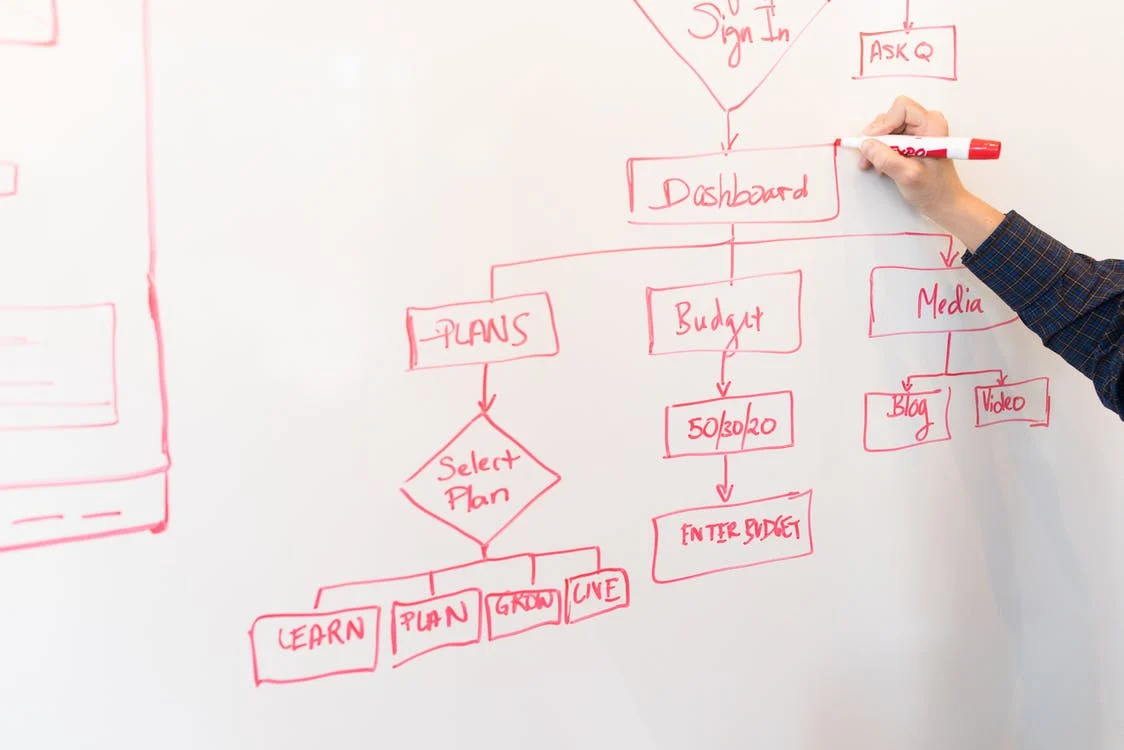Every operation in your business involves comprehensive project management to ensure its success. The workplace is constantly growing, and so are the project management methodologies. While some businesses may prefer traditional approaches, others may find more success with more modern methods. The key is to identify the best project management methodology for your workplace in order to achieve a thriving environment.
After all, project management entails giving shape and form to your ideas, ensuring their timely completion, and making sure that everyone agrees regarding the goals of the project. The methodology you choose will determine how your team will communicate and collaborate, how tasks will be assigned and monitored, and how risks will be identified and mitigated.
There is no one-size-fits-all answer to choosing a project management methodology. The best approach is to evaluate the specific needs of your workplace and decide on a methodology that will best suit your team. To help you make this decision, we’ve compiled a list of the most popular project management methodologies, as well as their advantages and disadvantages.
Types of Project Management Methodologies for Your Workplace
Below are descriptions of some of the more popular project management methodologies utilized in workplaces today. Consider which of these might be a good fit for your organization.
1. Waterfall
Waterfall is a traditional approach to project management that is often used in manufacturing and construction. This methodology involves completing tasks in a linear fashion, with each task depending on the completion of the previous one. Waterfall is often criticized for being inflexible and not conducive to change. For instance, if a client requests a change mid-project, it’s difficult to accommodate without starting the project from scratch.
If you still want to incorporate this method, be sure to have clear lines of communication between team members, as well as a project manager who can keep track of the project’s overall progress. In this way, if a problem arises, it can be quickly rectified.
2. Agile
Agile is a newer approach that has become increasingly popular in recent years. This methodology is based on the principle of continuous improvement and iteration. Rather than completing tasks linearly, agile projects are completed in sprints or short cycles. This allows for more flexibility and makes it easier to accommodate changes.
If you opt for an agile approach, be sure to choose software that will support this methodology, such as Jira or Trello. You’ll also need to ensure that your team is comfortable with this way of working, as it can be a big adjustment to more traditional methods.
3. Scrum
Scrum is a type of agile methodology that is often used in software development. This approach is based on the principle of self-organization. Rather than having a project manager who dictates what needs to be done, scrum relies on the team to determine how best to complete the project.
To incorporate scrum project management into your workplace, you’ll need to ensure that your team is well-trained in this methodology. You’ll also need to clearly understand the roles of each team member, as well as what is expected of them. For instance, the product owner sets the vision for the project, while the scrum master ensures the team is adhering to the scrum process.
4. Kanban
Kanban is a methodology that is often used in manufacturing and software development. This approach relies on the principle of visualizing work, which is done by creating a Kanban board. This board contains all the tasks that need to be completed, as well as the current status of each task.
This project management method is usually intended for projects that have a lot of moving parts. This is because it’s difficult to keep track of all the tasks without a visual aid. If you opt for this methodology, be sure to choose software that will support it, such as Trello or Jira.
5. Lean
If your business is in the manufacturing sector, the Lean project management method might be for you. Developed by the Toyota Production System, this methodology is based on the principle of continuous improvement. The goal of Lean is to eliminate waste and optimize the flow of work.
To incorporate Lean into your workplace, you’ll need to clearly understand the Lean principles. These include the identification of value, the value stream, flow, pull, and perfection. You’ll also need to ensure that your team is trained in this methodology. In addition, you’ll need to have a plan for how you will implement Lean in your workplace.
How to Choose the Right Project Management Methodology for Your Workplace

Now that you’ve identified the different project management methodologies, it’s time to learn how to choose the right one for your workplace. Always remember that the methodology you choose should support the organization’s culture and business processes. It should also be able to handle the specific needs of the project.
Here are some factors to consider when choosing a project management methodology:
Company culture
Every company’s environment and culture differ from one another. For a project manager to successfully manage a project in a workplace, they need to understand the culture of their workplace and what methods will work best within that culture. There are many project management methodologies that project managers can use to oversee a project in a workplace. The most important thing for a project manager to do is to understand their workplace culture and what methods will work best within that culture.
For instance, if the company has established a corporate culture of innovation, then a project manager should consider using an agile methodology. Agile methodologies promote creativity and collaboration within a team. However, if the company has a more traditional corporate culture, then a project manager should use a more traditional methodology, such as the waterfall method.
Business processes

Whatever industry your company is in, one must understand how the business processes work to be an effective project manager. This is especially critical for project managers who are new to the organization or who are assigned to a project in a different department than they are accustomed to.
Organizations typically have three types of business processes:
Core processes: These are the essential functions of the organization and are directly related to the company’s products or services.
Support processes: These processes help the organization function but are not directly related to the company’s products or services.
Management processes: These processes help the organization manage itself. They include human resources, finance, and information technology.
Project managers must understand and know who handles each process, what the inputs and outputs are, and how the processes are interconnected. In this way, they can identify what methodologies will work best for the project and the workplace.
Project size
The project size is solely determined by how much work is required to complete the project. Work is generally quantified in terms of tasks, and each task has an estimated number of hours required to complete it. The total number of hours required to complete the project is then used to determine the project size.
To select a project management method based on the project size, you need to understand how each methodologies scale. The fundamental differences in project management methodologies are in how they handle work breakdown, scheduling, and execution.
For example, the waterfall method is better suited for smaller projects because it breaks the project down into distinct phases. The scrum method is better suited for larger projects because it uses an iterative approach that allows for more flexibility.
The goals of the project

The goals of the project will also help to determine the necessary project management methodology. The goal of the project is to increase efficiency and productivity in the workplace by providing employees with the tools and knowledge they need to thrive.
If you don’t know the goal of your project, you won’t be able to choose a proper method to manage it. Worse, you might end up choosing a method that works against your goal.
For example, if your project is about hitting a sales mark of $1 million, you’ll want to focus on different aspects than if your goal is to improve customer satisfaction rates.
Project complexity
The complexity of the project is based on the number of deliverables, the number of stakeholders, and the number of dependencies. The more complex the project, the more likely it is that you will need to use a formal project management methodology.
However, even for simple projects, using a project management methodology can improve communication, clarity, and organization.
Let’s say, if your project takes longer than a month, is larger than a team of five people, or has over five dependencies, use a project methodology that has a framework of processes, tools, and templates. If you opt for one that involves a simpler methodology, you may not have all the processes and tools you need, which could lead to a less successful outcome.
Skill level of team members
Each team member of your department has a unique set of skills that they bring to the workplace. The skills might be related to their job or their personal life. The skills might be technical, such as the ability to use a specific software program, or they might be interpersonal, such as the ability to communicate effectively.
The skills of your team members will have a direct impact on the project management methodology that you choose for your workplace. If your team members are not skilled in a certain area, then that methodology might not be the best choice for your workplace.
For instance, if most of them are not familiar with complicated software, then choosing a methodology that requires the use of such software might not be the best idea. In such a case, you would need to either train your team members on the software or find a different methodology.
Company or department budget
The budget is another important factor in choosing a project management methodology. If you have a large budget, you’ll be able to invest in more complex methods. If you have a small budget, you’ll need to be more careful about how you spend your money.
In general, more expensive methods are more comprehensive and offer more features. They’re also more likely to be supported by a team of experts. On the other hand, cheaper methods are often more basic and might not offer all the features you need.
However, it doesn’t mean that cheaper methods are not as effective as more expensive ones. It all relies on your project’s individual requirements.
Once you’ve considered these factors, you should be able to narrow down your choices and select the most suitable project management methodology for your workplace.
Implementing a Project Management Methodology

Once you’ve selected the right project management methodology for your workplace, it’s time to implement it. Here are a few tips to help you get started:
- Train your team: Make sure all team members are properly trained on the chosen methodology.
- Set up a project management office: A PMO can help with the planning, execution, and monitoring of projects.
- Automate where possible: Use project management software to automate repetitive tasks and free up your team’s time.
- Define roles and responsibilities: Clearly define roles and responsibilities to avoid confusion and conflicts.
- Communicate with stakeholders: Keep stakeholders updated on the project’s progress and address their concerns promptly.
By following these tips, you can successfully implement a project management methodology in your workplace and create a thriving environment for your team.
Final Thoughts
In summary, your workplace should follow these guidelines to ensure a thriving environment:
- Encourage and reward creativity
- Foster an environment of collaboration
- Value and respect all employees’ contributions
- Encourage and support continuing education
- Use project management methodologies
When you have a thriving workplace, your employees will be more engaged, productive, and motivated. By utilizing project management methodologies, you can set your team up for success and ensure that everyone is working towards common goals. Through these guidelines, you can create a workplace that everyone will enjoy coming to each day.
